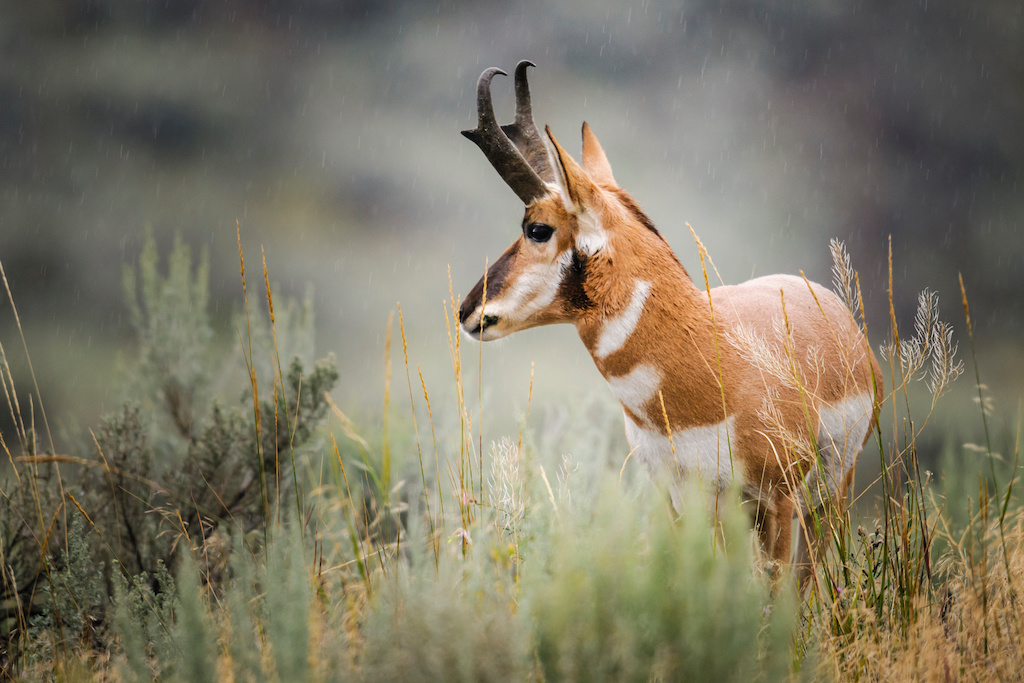Return of the migrators
Just like clockwork, late spring will bring the pronghorn, mule deer, and elk back to the SNRA. These ungulates (hooved mammals) leave the area late in fall, traveling over the mountains to lower elevations where vegetation is available. Then, as the weather improves, they will make the trek back to their summer residences to the Sawtooth Mountains and the Stanley Basin.
Navigating their terrain
It’s an especially vulnerable time of year for these creatures as their young are born and herds attempt to navigate roadways, fences, and vehicles. With an uptick in population and visitors to the Sawtooth National Recreation Area, we must do our best to be on the lookout for our hooved friends. While the Pronghorn is the fastest animal in the Western hemisphere, it’s no match for a vehicle traveling at speeds more than 60 mph. It’s capable of reaching the same speed, but sadly, it does not have the same braking ability!
Keeping habitats intact
Grasses, forbs, sagebrush, and shrubs are the primary diet of these herbivores. Another reason wildfires are so devastating. Yes, our beloved forests pay an incredible price, but the habitats and food sources for deer, elk, and pronghorn are also greatly impacted. We all must be diligent as we recreate this coming season. It’s up to us to be gracious guests while visiting their home in the Sawtooths.
Humans doing their part
In recent years landowners have taken steps -removing fencing during migration times or leaving out the bottom wire or pole to allow pronghorn to slip underneath. Hunting regulations are also adjusted based on the health of populations tracked in the area by regional agencies. As well, their predators are also studied, keeping an eye on this delicate food chain within these Idaho mountains. Yet, nearly every year, evidence of poaching takes place in an area where these animals are being managed by hardworking individuals who make it their life’s work to do what is best for them. Always abide by hunting regulations, report out-of-season harvesting, and contact authorities if you are involved in a collision with wildlife.
As we all return to an area we love this year, let’s remember to be as respectful as humanly possible for all of the creatures coming back to their SNRA seasonal residence. Take pictures from a safe distance, make sure campfires are extinguished, and use caution on our Idaho highways.




